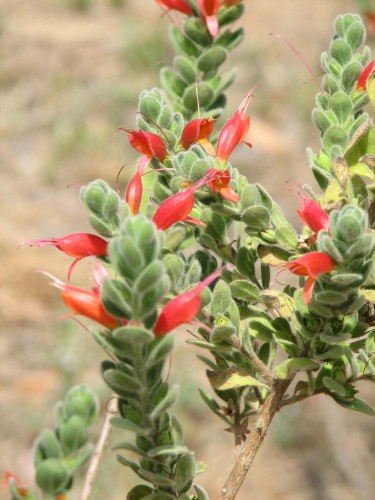More Australian Native Plants- Second Line Coastal Plantings
Finding plants that will tolerate second line coastal conditions can be a problem. This is another supplementary list of Australian Native Plants from an old book.
Australian Native Plants For Second Line Coastal Plantings
Acacia aculeatissima
Acacia baileyana
Acacia calamifolia
Acacia cultriformis
Acacia elata
Acacia elongata
Acacia glaucescens
Acacia lasiocarpa
Actinostrobus pyramidalis
Actinotus helianthus
Actinotus minor
Agonis flexuosa
Agonis juniperina
Angophora costata
Angophora floribunda
Anigozanthos flavidus and hybrids
Astroloma conostephioides
Astroloma humifusum
Australian Native Plants for Coastal Plantings
Here are two short lists of Australian Native plants suitable for coastal planting.
It would be best if you consulted a local native plant nursery catalogue to check on heights and drainage/soil requirements. For example, in our 320 mm rainfall some of these would be quite reasonable for a suburban backyard. However the same tree in an area of 600 mm rainfall could grow to be far too big for the same size yard. The ultimate height and spread of the tree needs to be carefully considered. It is an expensive exercise to cut down a mature tree and a great shame to do so considering the time taken to reach that height.
Front line Coastal (there would be others)
Acacia floribunda, longifolia, suaveolens,
Banksia ericfolia, integrifolia, marginata, serrata
Fugosia patersonii,
Hakea suaveolens
Melaleuca armillaris, halmatuorum,Second line coastal (there would be others)
Acacia notabilis, pycnantha, saligna,
Agonis flexuosa,
Banksia baxteri, grandis, prionotes
Bursaria spinosa
Callistemon citrinus and forms, viminalis
Callitris rhomboidea
Various casuarinas and allocasuarinas
Ceratopetalum gummiferum
Many Eucalypts
Lillypilly forms
Grevillea robusta
Eremophila splendens
I find Eremophila splendens to be a spectacular plant when in flower. The bright red flowers glow against the foliage which is quite hairy similar to some Eremophila glabra forms. This plant needs very good drainage. It is either a sprawling low plant or can be quite upright.
Eremophila splendens is restricted to Shark Bay about midway along the Western coast of Western Australia. It grows on the heathlands with Thryptomene and Melaleuca.
Last winter I lost some small plants to frost but I want to try again in a more sheltered location where the canopy of mallees may protect them. This is a plant that needs to be pruned aftyer flowering to encourage new and dense growth. Mature plants get very leggy and have sparse foliage without the pruning.
Australian Native Plants For 1st Line Coastal Plantings
I thought I would just list the plants from a list I have in an old book and not worry about their tolerance to alkaline soil. I can work on that list later.
Plants suitable for 1st line coastal planting.
Carpobrotus glaucescens
Carpobrotus modestos
Carpobrotus rossii
Disphyma crassifolia
Epacris stuartii
Frankenia angustipetala
Frankeniapauciflora
Hibbertia scandens
Ipomoea brasiliensis
Isolepis nodosa
Kennedia glabrata
Myoporum parvifolium
Pimelea ferruginea
Scaevola aemula
Scaevola calendulacea
Scaevola crassifolia
Scaevola pallida
Spinifex hirsutus
Swainsona lessertifolia
Thomasia petalocalyx
Zygophyllum billardieri
1st and 2nd Line Coast
The making of plant lists for these situations is trickier than I thought. Where does 1st line coast begin and end? The Australian Plant Society has decided that the sea front is 1st line coast. This could be a distance of 50-100 metres from the water. Plants that can be grown need to have tolerance to salt laden winds and salt soil. More tender plants could be planted with the protection of wind break plantings which are tolerant of 1st line coast conditions.
The second street back from the coast is the beginning of 2nd line coastal plantings. The further back from the coast the garden is, the plants can be less tolerant of the salt laden winds, especially with good protection from wind breaks or other barriers.
In some instances, the nature of the soil will also determine the plantings. For example, the soil could be rocky and gravelly, or pure sand dune sand.
